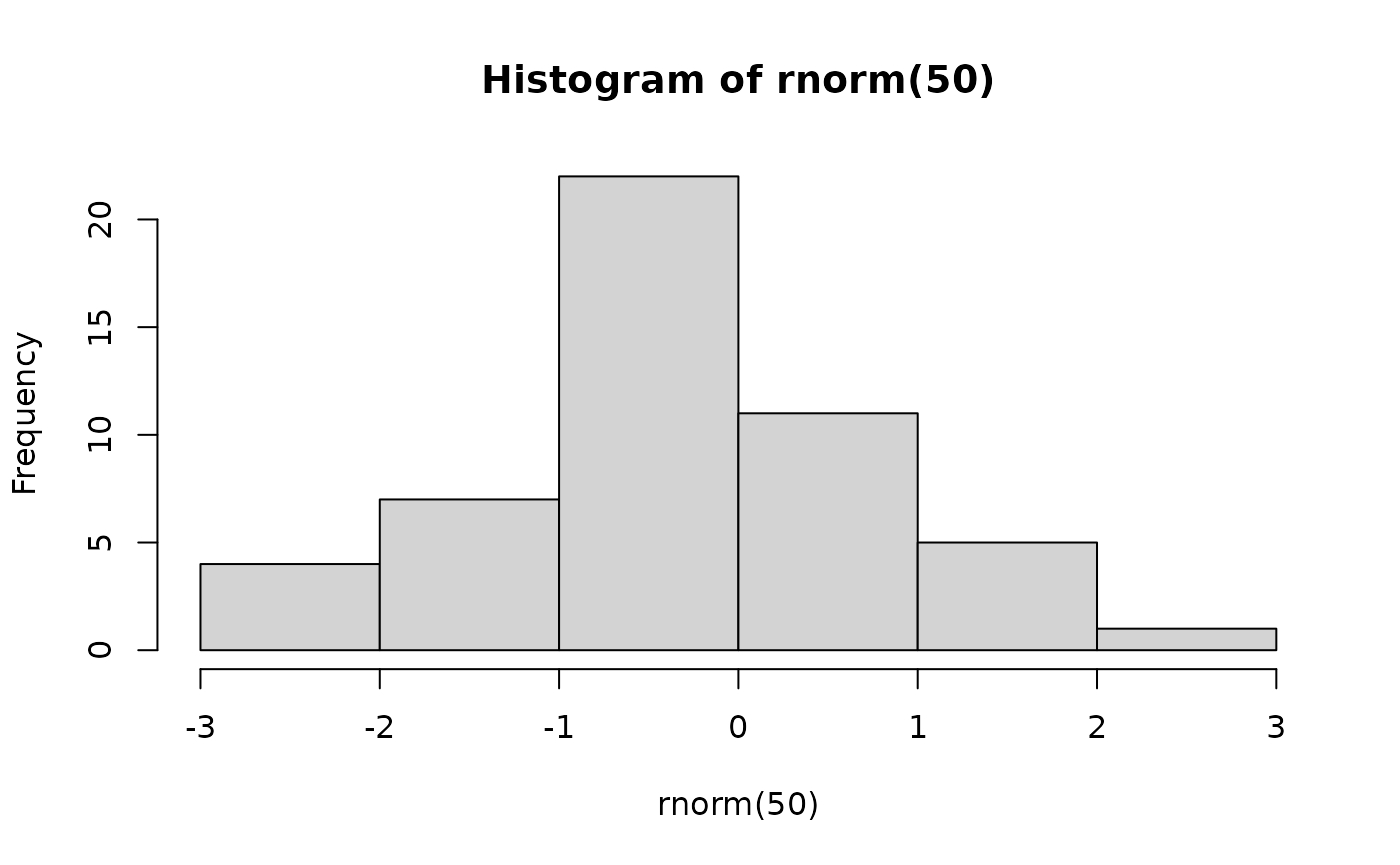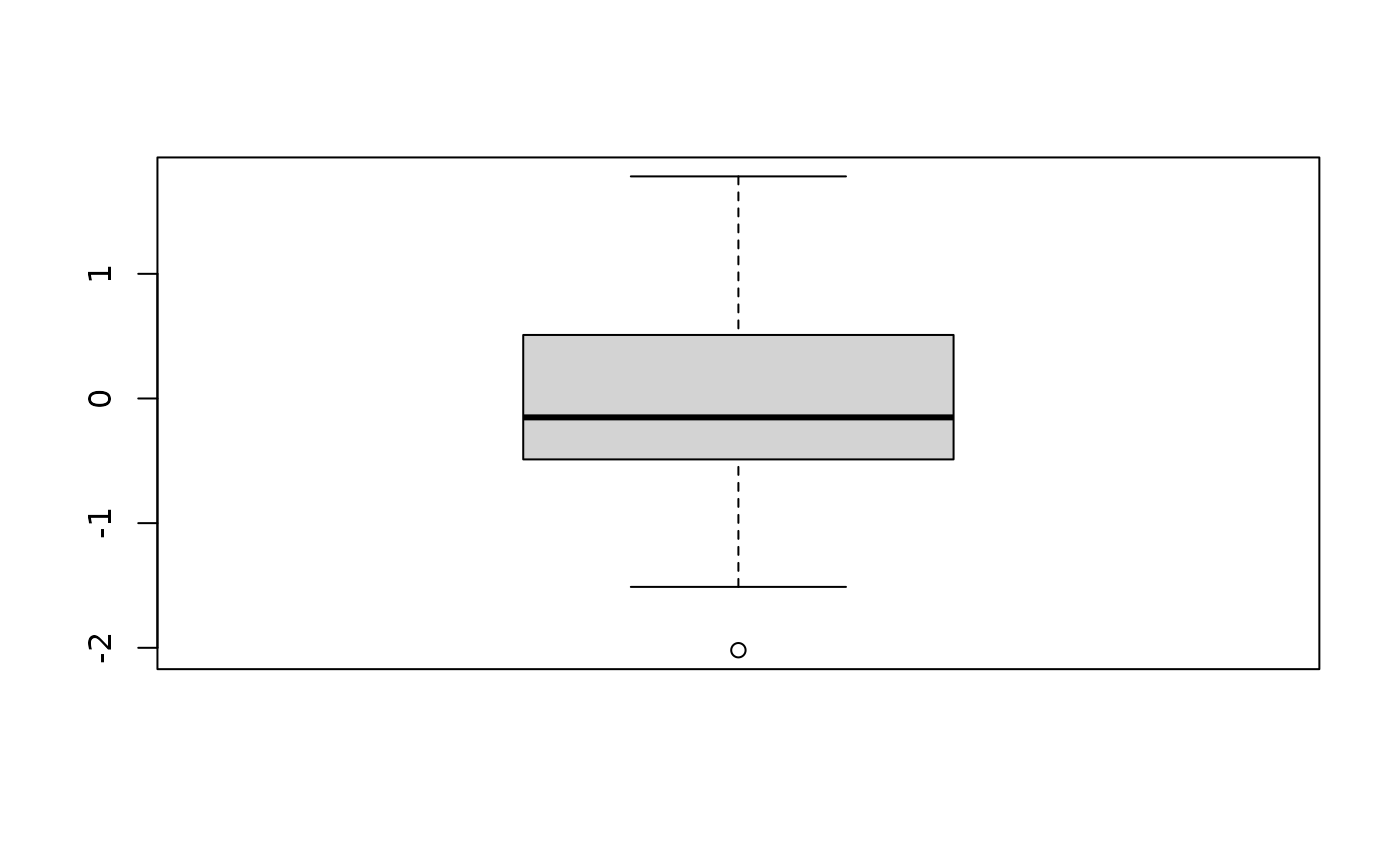
svSweave - Sweave, Knitr and R Markdown Companion Functions
Philippe Grosjean (phgrosjean@sciviews.org)
2022-05-10
Source:vignettes/svSweave.Rmd
svSweave.RmdThe {svSweave} package provides different functions to better manage Sweave and Knitr with LyX, a document processor that creates LaTeX code. These functions are deprecated and are not detailed here. See their help page ?clean_lyx().
The package also provides functions to automatically enumerate and reference figures, tables and equations in R Markdown documents (an alternate mechanisms to {bookdown} or {quarto} that works everywhere). Indeed, this feature is missing in the basic R Markdown documents. The various {bookdown} templates provide a \@ref(label), see bookdown cross references and Quarto simply uses @label, see quarto cross references. The functions fig(), tab() and eq() provide a different mechanism to obtain a similar result: to enumerate items and to cross-reference them in the text. Here an example of a numbered figure with its caption. In order to use these function, you must load the {svSweave} package in a (setup) chunk before you use these functions:
Numbered figures
You can use fig("my caption text") to number the caption of a figure in fig.cap=. The chunk must be named too.

Figure 1: An example of a simple histogram.
Now, you can reference this plot in the text using fig$label (see Fig ). It also works if the first reference appears before the figure itself1, see Fig .

Figure 2: A second plot as an example.
Summary: produce numbered figures from labeled R chunks by indicating
fig.cap = fig("...."), and reference them usingfig$labelin an inline R expression.
Numbered tables
The same principle works for tables using knitr::kable(). For instance, see Table .
iris dataset.
| Sepal.Length | Sepal.Width | Petal.Length | Petal.Width | Species |
|---|---|---|---|---|
| 5.1 | 3.5 | 1.4 | 0.2 | setosa |
| 4.9 | 3.0 | 1.4 | 0.2 | setosa |
| 4.7 | 3.2 | 1.3 | 0.2 | setosa |
| 4.6 | 3.1 | 1.5 | 0.2 | setosa |
| 5.0 | 3.6 | 1.4 | 0.2 | setosa |
| 5.4 | 3.9 | 1.7 | 0.4 | setosa |
A reference to cars (Table ) and to iris (Table ) again.
cars.
| speed | dist |
|---|---|
| 4 | 2 |
| 4 | 10 |
| 7 | 4 |
| 7 | 22 |
| 8 | 16 |
| 9 | 10 |
Summary: produce numbered tables from labeled R chunks by indicating
caption = tab("....")inknitr::kable(), and reference them usingtab$labelin an inline R expression.
Numbered equations
Finally, numbered display equations can also be constructed and cross-referenced. In the display equation, constructed with a pair of $$, you use eq(label) in an inline R expression. To reference it, you use eq$label also in an inline expression.
\[x=\frac{-b \pm \sqrt{b^2 - 4ac}}{2a} \label{eq:eqlabel} \tag{1}\]
… and I can reference Eq. \(\eqref{eq:eqlabel}\) like this.
\[\sum_{i = 0}^n{x^2} \label{eq:sum} \tag{2}\]
I can cite one Eq \(\eqref{eq:sum}\), or another one Eq \(\eqref{eq:pythagoras}\).
\[a^2+b^2=c^2 \label{eq:pythagoras} \tag{3}\]
Summary: produce numbered equations by adding
eq(label)inline R expression inside a display equation, and reference to it usingeq$labelinside an inline R expression.
These tags work in R Markdown to compile HTML, LaTeX or Word, with some glitches remaining to eliminate for LaTeX or Word.
Take care, however, that numbering is sequential from the first call (either cross-reference, or label) in Word. You cannot cross-reference the last figure at the beginning of the document… or that last figure will be numbered “Fig. 1” there. For the other formats, it is not a problem.↩︎
